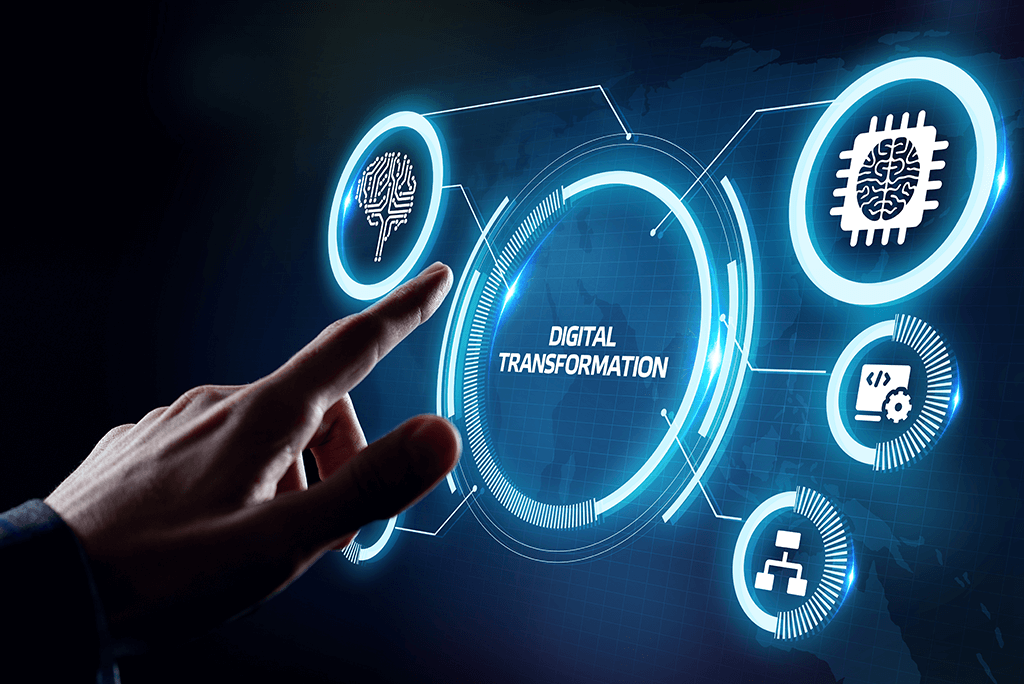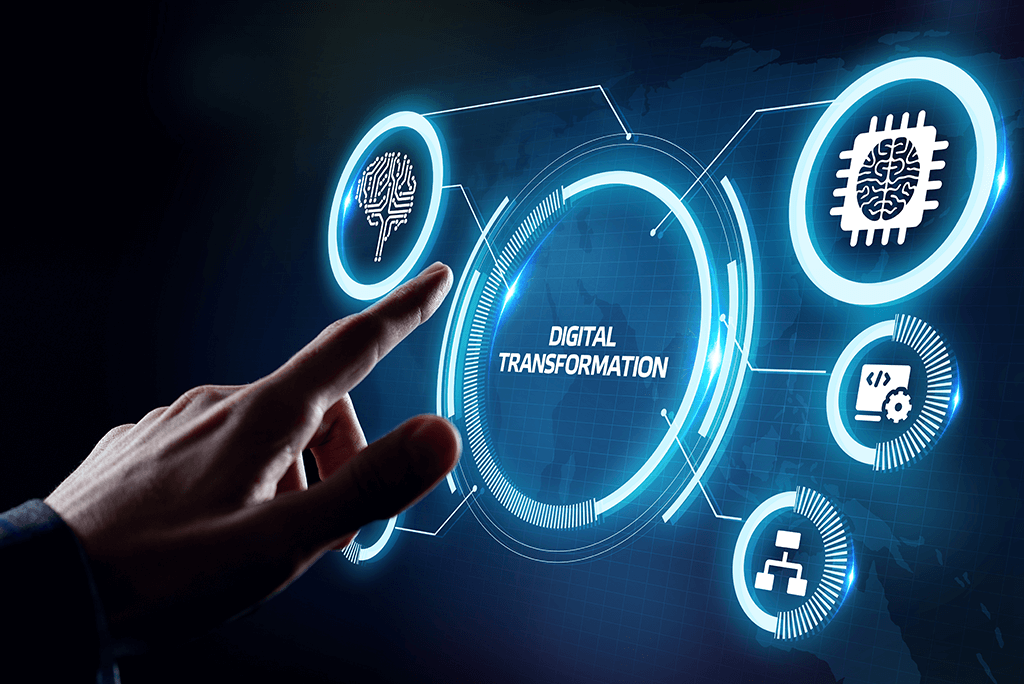
Digital Transformation: Adapting to the Digital Age – Your Essential Beginner’s Guide
In an era defined by rapid technological advancement, the world around us is changing at an unprecedented pace. From how we communicate and shop to how businesses operate and deliver services, digital technologies are reshaping every facet of our lives. This profound shift isn’t just about adopting new gadgets; it’s about a fundamental rethinking of how organizations work, interact with customers, and create value. This massive overhaul is what we call Digital Transformation.
If the term sounds daunting, don’t worry. This comprehensive guide will break down Digital Transformation (often abbreviated as DT) into easy-to-understand concepts, exploring its importance, the technologies driving it, common challenges, and how businesses (and individuals) can successfully navigate this exciting, ever-evolving landscape.
What Exactly Is Digital Transformation? Beyond Just Technology
At its core, Digital Transformation is not just about buying new software or upgrading your computers. While technology is a crucial enabler, DT is a much broader, more holistic, and strategic process.
Simply put, Digital Transformation is the strategic adoption of digital technologies to fundamentally change how an organization operates, delivers value to customers, and engages with employees.
Think of it this way:
- It’s about re-imagining traditional processes.
- It’s about fostering a culture that embraces innovation and change.
- It’s about using data and technology to make smarter decisions.
- It’s about putting the customer experience at the very heart of everything.
It’s a journey, not a destination, requiring continuous adaptation and innovation. It affects every area of a business, from marketing and sales to operations, human resources, and customer service.
Why is Digital Transformation So Important Right Now? The Imperative to Adapt
In today’s fast-paced world, standing still is no longer an option. The reasons why businesses must embrace Digital Transformation are compelling and critical for survival and growth:
- Staying Competitive: Competitors are innovating faster, offering better services, and reaching customers in new ways. Digital Transformation helps businesses keep pace and even leapfrog rivals.
- Meeting Customer Expectations: Modern customers expect seamless, personalized, and instant experiences across all channels. They want convenience, speed, and responsiveness, and digital tools are essential to deliver this.
- Increasing Efficiency and Productivity: Automating repetitive tasks, streamlining workflows, and leveraging data analytics can significantly boost operational efficiency, reduce costs, and free up employees for more strategic work.
- Unlocking New Business Models and Revenue Streams: Digital technologies can open doors to entirely new ways of doing business, creating innovative products or services that weren’t possible before. Think of streaming services, ride-sharing apps, or subscription boxes.
- Enhanced Data-Driven Decision Making: With digital tools, businesses can collect, analyze, and interpret vast amounts of data. This allows for informed, evidence-based decisions rather than relying on guesswork or intuition.
- Improved Employee Experience: Digital tools can empower employees, provide better communication channels, offer flexible work arrangements, and automate tedious tasks, leading to higher job satisfaction and productivity.
- Resilience and Agility: As the recent global pandemic showed, businesses with robust digital capabilities were far better equipped to pivot, adapt to remote work, and continue serving customers during unprecedented disruption.
Key Technologies Driving Digital Transformation: The Tools of Change
While Digital Transformation is more than just technology, these are the powerful engines making it possible:
-
1. Cloud Computing:
- What it is: Instead of owning and maintaining your own physical servers and software, you access computing resources (like storage, processing power, and applications) over the internet from a provider (e.g., Amazon Web Services, Microsoft Azure, Google Cloud).
- Why it’s crucial: Offers flexibility, scalability (you only pay for what you use), cost savings, and allows businesses to deploy new applications and services much faster. Think of it like renting a powerful, always-available data center instead of building your own.
-
2. Artificial Intelligence (AI) & Machine Learning (ML):
- What it is: AI enables machines to perform tasks that typically require human intelligence (like understanding speech, recognizing images, making decisions). Machine Learning is a subset of AI where systems learn from data without being explicitly programmed.
- Why it’s crucial: Powers chatbots for customer service, automates data analysis, predicts customer behavior, optimizes supply chains, and even helps in drug discovery. It allows businesses to gain insights and automate complex processes.
-
3. Big Data & Analytics:
- What it is: Refers to extremely large and complex datasets that traditional data processing applications cannot handle. Analytics is the process of examining these datasets to discover patterns, correlations, and insights.
- Why it’s crucial: Helps businesses understand customer preferences, identify market trends, optimize pricing strategies, detect fraud, and personalize experiences, leading to more informed and strategic decisions.
-
4. Internet of Things (IoT):
- What it is: A network of physical objects ("things") embedded with sensors, software, and other technologies that connect and exchange data with other devices and systems over the internet.
- Why it’s crucial: Enables smart factories (predictive maintenance), smart cities (traffic management), connected healthcare devices, and personalized consumer experiences (smart home devices), leading to real-time data collection and automation.
-
5. Cybersecurity:
- What it is: The practice of protecting systems, networks, and programs from digital attacks. As businesses become more digital, they become more vulnerable to cyber threats.
- Why it’s crucial: Essential for protecting sensitive customer data, intellectual property, and ensuring business continuity. A strong cybersecurity posture builds trust and protects against costly breaches.
-
6. Automation & Robotics:
- What it is: Using technology to perform tasks with minimal human intervention. Robotic Process Automation (RPA) mimics human actions to automate repetitive, rule-based digital tasks.
- Why it’s crucial: Improves efficiency, reduces errors, lowers operational costs, and frees up human employees to focus on more creative, strategic, and customer-facing activities.
The Pillars of a Successful Digital Transformation Strategy: More Than Just Tech
For Digital Transformation to truly succeed, it cannot simply be a technology project. It needs a holistic strategy built on several key pillars:
-
1. People & Culture (The Most Important Pillar):
- Why it matters: Technology is useless if your employees aren’t on board or don’t know how to use it. A culture that embraces change, encourages experimentation, and is willing to learn new skills is paramount.
- Focus on: Training, change management, clear communication, fostering a growth mindset, and empowering employees to become digital champions.
-
2. Process Optimization:
- Why it matters: Simply digitizing a bad, inefficient process will only give you a digitally bad process. Digital Transformation requires re-evaluating and redesigning workflows to be more efficient, agile, and customer-centric.
- Focus on: Mapping current processes, identifying bottlenecks, automating repetitive tasks, and streamlining cross-departmental collaboration.
-
3. Customer Experience (CX) at the Core:
- Why it matters: The ultimate goal of many digital transformations is to better serve the customer. Understanding their journey, pain points, and desires is crucial.
- Focus on: Personalization, seamless multi-channel interactions, faster response times, self-service options, and gathering customer feedback to continually improve.
-
4. Data Strategy & Governance:
- Why it matters: Data is the fuel for Digital Transformation. Without a clear strategy for collecting, storing, analyzing, and securing data, the insights gained from technology will be limited.
- Focus on: Data quality, accessibility, ethical use, compliance (e.g., GDPR, CCPA), and building capabilities for data analytics.
-
5. Technology Adoption & Integration:
- Why it matters: Choosing the right technologies that align with business goals and integrating them effectively is key. Avoiding "tech for tech’s sake."
- Focus on: Scalable solutions, interoperability between systems, cybersecurity considerations, and a clear roadmap for technology implementation.
Challenges on the Road to Digital Transformation: Navigating the Obstacles
While the benefits are clear, the path to Digital Transformation is often fraught with challenges. Being aware of them can help organizations prepare and mitigate risks:
- Resistance to Change: Perhaps the biggest hurdle. Employees may be comfortable with old ways, fear job displacement, or lack the confidence to learn new tools.
- Lack of Skills and Talent: A shortage of digital skills within the existing workforce or difficulty in recruiting new talent can slow down or halt initiatives.
- Budget Constraints: Digital Transformation can be a significant investment, and securing the necessary funding can be challenging, especially for smaller businesses.
- Legacy Systems: Older, outdated technology systems can be difficult to integrate with new digital tools, creating data silos and inefficiencies.
- Cybersecurity Risks: As more data moves online, the risk of cyberattacks, data breaches, and privacy violations increases, requiring robust security measures.
- Poor Planning and Vision: Without a clear strategy, defined goals, and strong leadership buy-in, efforts can become fragmented, costly, and fail to deliver desired outcomes.
- Data Overload and Quality: Businesses might collect vast amounts of data but struggle to make sense of it, or the data itself might be inaccurate or incomplete.
Steps to Embark on Your Digital Transformation Journey: A Practical Approach
Ready to start your own Digital Transformation journey? Here’s a simplified roadmap:
- Define Your Vision and Goals: What do you want to achieve? Better customer service? Increased efficiency? New products? Be specific and align with overall business strategy.
- Assess Your Current State: Where are you now? What processes are manual? What technologies are outdated? What are your customers’ pain points?
- Identify Key Areas for Transformation: Based on your vision and assessment, prioritize which areas will yield the biggest impact (e.g., customer service, supply chain, internal operations).
- Start Small, Think Big: Don’t try to transform everything at once. Pick a pilot project, learn from it, and then scale up. This helps manage risk and build momentum.
- Invest in Your People: Provide training, foster a culture of learning, communicate openly about the benefits of change, and involve employees in the process.
- Choose the Right Technology (Carefully!): Select tools that truly address your identified needs and integrate well with existing systems where possible. Avoid impulse buying.
- Measure, Learn, and Adapt: Digital Transformation is ongoing. Continuously monitor your progress, gather feedback, analyze data, and be prepared to adjust your strategy as new insights emerge or technologies evolve.
- Secure Leadership Buy-in: Without strong support from the top, any transformation effort is likely to falter. Leaders must champion the change and allocate resources.
The Future is Digital: What to Expect
Digital Transformation is not a fad; it’s the new normal. The digital age is constantly evolving, and so too will the concept of Digital Transformation. We can expect:
- Hyper-Personalization: Even more tailored experiences for customers, driven by advanced AI and data analytics.
- Increased Automation: From routine tasks to complex decision-making, automation will continue to permeate more aspects of business.
- Ethical AI and Data Governance: Greater focus on responsible AI development and robust frameworks for data privacy and security.
- Sustainable Digital Practices: As technology consumes more energy, there will be an emphasis on green IT and sustainable digital solutions.
- The Blurring of Physical and Digital Worlds: Augmented Reality (AR) and Virtual Reality (VR) will increasingly integrate digital experiences into our physical world.
Conclusion: Embracing the Digital Journey
Digital Transformation is no longer an option for businesses; it’s a fundamental requirement for thriving in the modern world. It’s a challenging but incredibly rewarding journey that promises enhanced customer experiences, improved operational efficiency, new growth opportunities, and a more resilient and agile organization.
By understanding its core principles, embracing the right technologies, focusing on people and culture, and planning strategically, any organization can successfully adapt to the digital age and unlock its full potential. The future is digital, and those who adapt will lead the way.



Post Comment